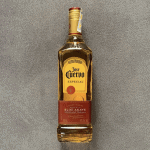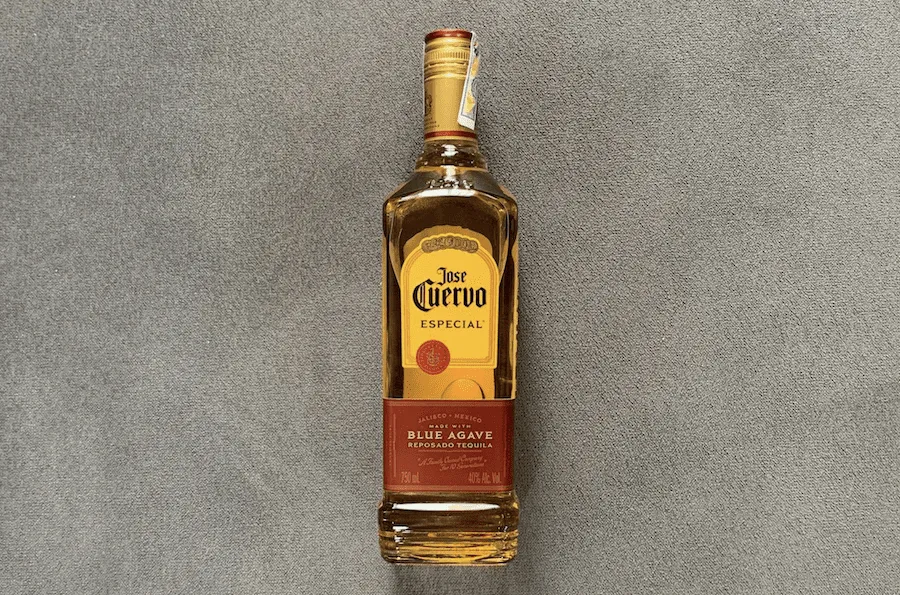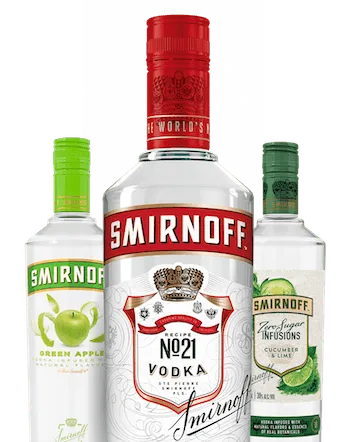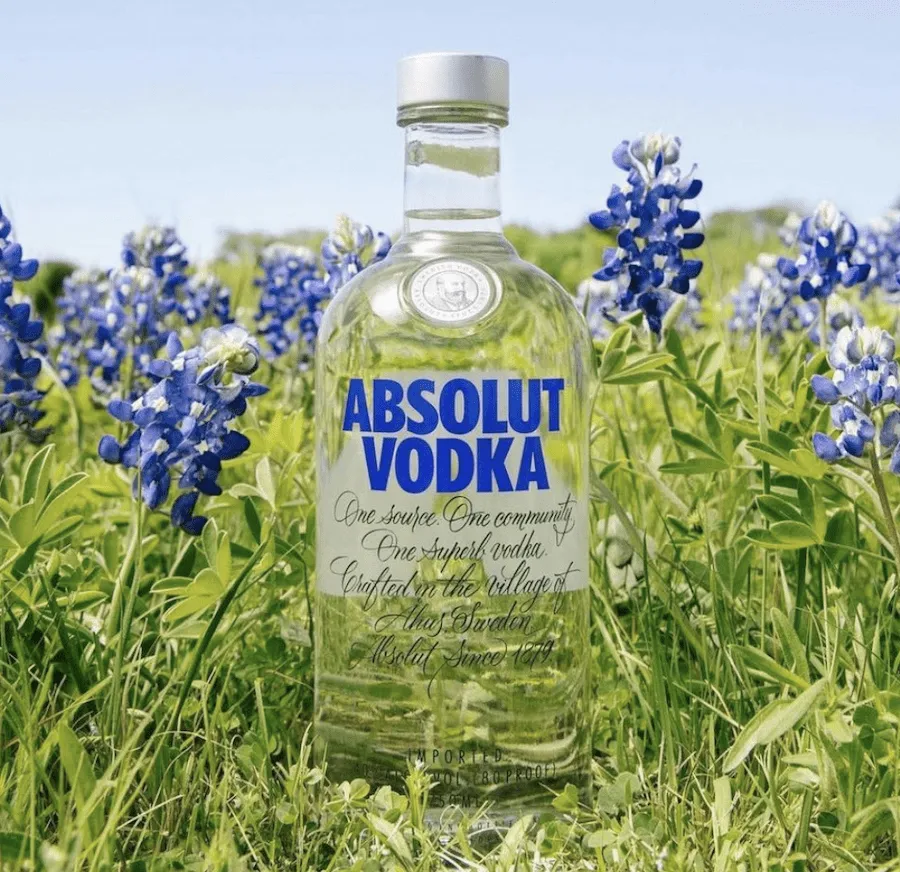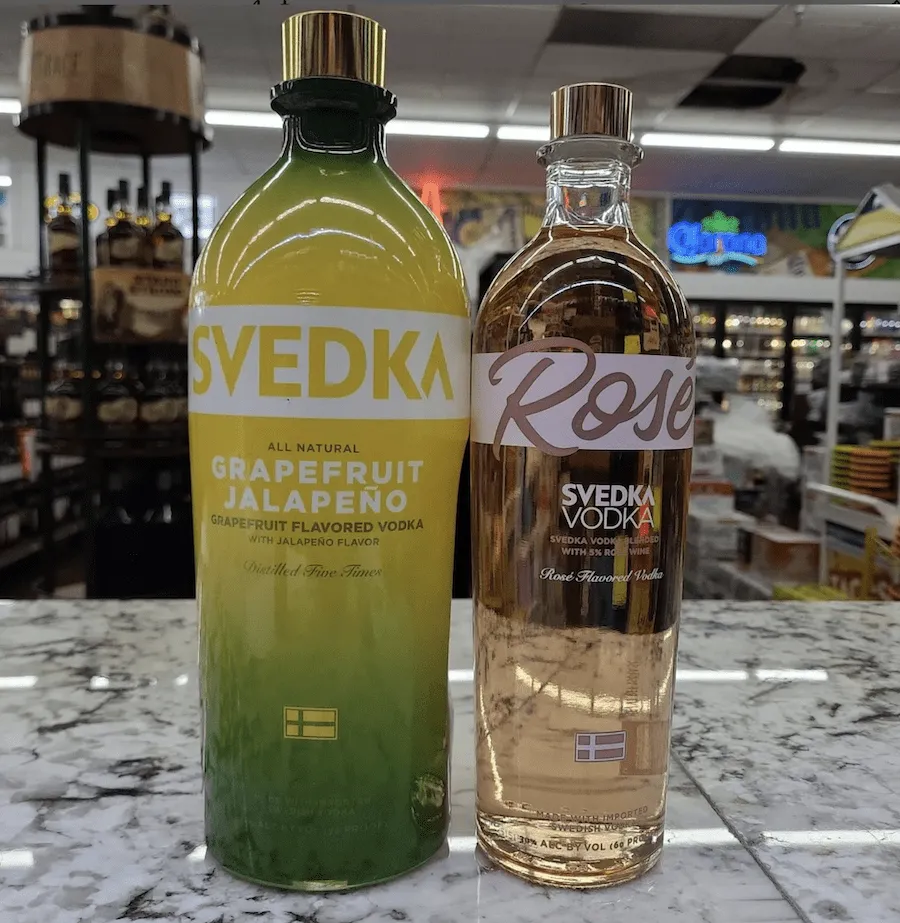Personally, I don’t generally recommend vodka as a spirit. Most vodka cocktails would simply be better as gin drinks. If you’re drinking vodka with soda, tonic, or another carbonated mixer, then the brand really isn’t going to make a huge difference.
Brands like Graingers, Deep Eddy, Stoli, Skyy, and Smirnoff are all similarly priced or cheaper, and the difference in taste will be negligible with the addition of a mixer. On the “premium” side, I think Ketel One, Grey Goose, and Belvedere are all fine, but again, when mixed in a cocktail, you likely won’t be able to tell the difference.
I do think there are a few interesting vodkas out there. If you’re drinking them neatly, I think Potato Vodkas like Chopin and Luksusowa are interesting. There is a bit more flavour and thicker almost fatty consistency. Zubrowka is a Polish vodka flavoured with bison grass that I easily crown my favourite vodka. It has subtly sweet notes of vanilla, chamomile, cocoa flower, and grass. They also make rose vodka.
Vodka Prices
| Price Rank | Type | Bottle Size | Price |
|---|---|---|---|
| 1 | Ciroc Vodka | 750ml | $25.99 - $34.99 |
| 2 | Grey Goose Vodka | 750ml | $24.99 - $36.99 |
| 3 | Ketel One Vodka | 750ml | $18.99 - $24.99 |
| 4 | Tito's Vodka | 750ml | $16.99 - $24.99 |
| 5 | Absolut Vodka | 750ml | $14.99 - $32.99 |
| 6 | Skyy Vodka | 750ml | $10.99 - $16.99 |
| 7 | New Amsterdam Vodka | 750ml | $10.99 - $16.99 |
| 8 | Smirnoff Vodka | 750ml | $9.99 - $21.99 |
| 9 | Svedka Vodka | 750ml | $9.99 - $18.99 |
| 10 | Pinnacle Vodka | 750ml | $9.99 - $16.99 |
| 11 | UV Vodka | 750ml | $8.99 - $11.99 |
Introduction to Vodka
Vodka is a clear distilled spirit known for its versatility and neutral flavour profile, making it an ideal base for a variety of mixed drinks and cocktails. Typically, the distillation process involves fermenting a base of grain or potatoes, although other ingredients like fruits or sugar can also be used.
The quality and character of vodka are heavily influenced by the number of distillations it undergoes and the purity of the water added during the production process. A higher number of distillations can result in a smoother spirit, while the water source can introduce subtle flavour nuances.
In terms of flavour, one will find that most vodkas are characterized by their clean taste, with subtle differences between brands. These variations stem from the ingredients used and the distillation methods employed.
Grains such as wheat, corn, and rye are commonly used in vodka production, each contributing its own unique note to the final product. Wheat vodkas tend to be smooth and slightly sweet, rye offers a spicy note, while corn provides a softer texture. Potato-based vodkas are often richer and have a creamier mouthfeel.
Vodka’s widespread appeal lies in its ability to blend seamlessly with other flavours, which has cemented its place as a staple in bars and homes around the world. Its price range is broad, catering to varying preferences and occasions, from budget-friendly options to premium selections.
In the market, vodkas are often categorised into tiers based on their price point:
- Budget: Typically under £15
- Standard: Ranging from £15 to £25
- Premium: Priced at over £25
This spirit has evolved from its Eastern European roots to become one of the world’s most consumed alcoholic beverages.
The Anatomy of Vodka
Vodka’s character is defined by its ingredients, purity, and craftsmanship. This spirit’s essence lies in its composition and the nuanced process through which it’s made.
Base Ingredients and Varieties
Vodka primarily derives from fermented grains such as wheat, rye, barley, and oats, or potatoes. Each base yields a different profile; for instance, wheat tends to produce a smoother spirit, while rye offers a spicy note.
Flavoured Vodka Enhancements
Flavoured vodka introduces an additional layer of complexity. Enriched with fruit, citrus, or savoury flavours, these vodkas offer varied aromas and tastes that appeal to diverse palates.
Distillation and Filtration Process
Vodka undergoes a distillation process, often multiple times, to increase purity and remove unwanted compounds like tails. Filtration, often through charcoal filtering, further refines the vodka, contributing to its clean taste and aroma.
Understanding ABV in Vodka
Vodka typically has an alcohol by volume (ABV) of 40%, which means the spirit consists of 40% ethanol and 60% water. ABV can vary by brand, impacting the spirit’s strength and character.
Global Vodka Terroir
The concept of terroir recognises how a region’s climate and soil affect the qualities of vodka. Whether it’s the clear vodkas of Russia and Poland or the innovative approaches in Sweden and the United States, location matters.
The Significance of Water in Vodka
Water isn’t just a diluent; it’s a significant element that affects vodka’s texture and taste. The purity and mineral composition of water used in vodka production are critical for achieving a desired profile.
The Role of Additives
A few vodkas contain additives like sugar or honey to adjust the taste. However, traditional vodka is prized for its lack of additives, focusing on the natural essence of its base ingredients and the skill of its distillation.
Assessment of Vodka Quality
Vodka’s quality is often assessed through a combination of its production process and sensory attributes. Consumers and experts alike weigh a number of factors, from the purity of the ethanol to the subtleties of aroma and flavour, to determine a vodka’s standing.
Factors Determining Quality
The quality of vodka is influenced by several key components:
- Ethanol Purity: This is crucial as it forms the base of vodka. The highest quality vodka generally contains ethanol that has been distilled multiple times to remove impurities.
- Water Quality: The water used in vodka should be free of contaminants. It often undergoes filtration to ensure purity, which can have a significant impact on the final taste and smoothness of the spirit.
- Filtering Process: Vodka can be filtered through materials like charcoal or quartz to remove residual impurities. The method and extent of filtering can contribute to both the purity and the distinctive character of the vodka.
- Ingredients: Some vodkas are made from grains, others from potatoes or even grapes. The source material can impact the flavour and aroma profiles.
A clear understanding of these elements and their effect on the end product is essential for anyone interested in the intricacies of vodka quality.
The Art of Vodka Tasting
When it comes to vodka tasting, the methodology is precise:
- Aroma: Before tasting, the nose can detect any off-notes or the presence of a distinctive character. A quality vodka will have a clean and sometimes subtle aroma without harsh alcohol notes.
- Flavour: On the palate, a premium vodka will often present a smooth, clear flavour. While vodka is commonly thought of as flavourless, connoisseurs look for a certain level of complexity and a pleasing aftertaste.
The sensory evaluation of vodka is both an art and a science, demanding a focused approach to uncover the layers of a seemingly simple spirit.
Popular Vodka Brands and Price Comparison
This section dissects the competitive landscape of vodka brands, examining the market leaders, their pricing strategies, and the distinctiveness of high-end and value offerings.
Top-Selling Vodka Brands
The vodka market is dominated by a number of key players known for their quality and market presence. Tito’s homemade vodka, deriving from corn, commands over 7% of the US market share. Other top-sellers include Grey Goose, a premium brand that stands as a symbol of sophistication, and New Amsterdam, a modern staple in the spirits category. Svedka and Ketel One also feature prominently, each with their own unique selling points that resonate with consumers.
Pricing Strategy for Vodka Brands
Vodka pricing is varied and strategically set; for example, Belvedere Vodka is found north of $40, a price point that reflects its position as a high-quality spirit crafted from a 600-year-old recipe. Brands like Tito’s and Effen use a competitive pricing approach that balances quality with accessibility, aiming to reach a wider audience.
High-End Vodkas and Their Distinctiveness
High-end vodkas such as Belvedere and Grey Goose have carved out a niche by offering a luxurious experience backed by centuries-old distillation processes and exclusive ingredients. Belvedere Vodka, specifically, prides itself on a pure and refined taste, while Grey Goose Vodka is often celebrated for its exceptional smoothness and clear flavour profile.
Value Vodkas and Market Position
Value brands like Svedka and New Amsterdam offer an affordable price without compromising on taste, enabling them to hold strong positions in the market. These brands have managed to establish themselves through smart marketing and by offering a versatile product lineup that appeals to a cost-conscious audience that still enjoys a quality spirit.
Insights into Vodka Consumption
Vodka stands as a versatile spirit, accommodating a diverse range of tastes through its presence in classic cocktails and its ability to be served in various ways.
Classic Vodka Cocktails
Vodka forms the backbone of many iconic cocktails that have stood the test of time. Among them, the Martini, characterised by its mix of vodka and vermouth, garnished with an olive or a lemon twist, remains a quintessential choice for enthusiasts. Cosmopolitans offer a sweet-tart option, blending vodka with cranberry juice and a touch of citrus. The Bloody Mary stands apart as a savoury fixture, with vodka mixed into tomato juice, and seasoned with an assortment of herbs and spices for a hearty brunch accompaniment. Another beloved concoction is the Moscow Mule, a refreshing blend combining vodka with ginger beer and a splash of lime juice, typically served in a copper mug.
Best Practices for Serving Vodka
When serving vodka, temperature is crucial. For a clean, crisp taste, serving vodka chilled straight from the freezer enhances its smoothness, making it a popular choice for sipping neat or in cocktails. Additionally, optimising the flavour of vodka means pairing with the right elements; for instance, unflavoured vodka complements light, citrusy ingredients, while flavoured varieties, which include an extensive range from fruity to spicy, can elevate the taste profile of a drink, when used thoughtfully.
In adhering to these practices, drinkers can experience the full range of what vodka can offer, whether that is the purity of the spirit on its own or its chameleon-like ability to harmonise with a myriad of different mixers and garnishes.
Variance in Vodka Brands
The vodka market showcases a vast range of options, differing notably in flavour profiles, base ingredients, and presentation.
Analyzing the Diverse Vodka Selection
When exploring the diverse vodka selection, one observes a spectrum from traditional to flavoured vodkas. For instance, Crystal Head Vodka distinguishes itself with a neutral flavour profile, catering to enthusiasts of unadulterated vodka. In contrast, brands like Absolut offer an array of flavoured vodkas, integrating ingredients such as citrus and berries, appealing to a demographic seeking variety.
New and Noteworthy Vodka Brands
Emerging brands such as Harridan Vodka have entered the market with a distinctive character, promising unique attributes and taste sensations. Tito’s Handmade Vodka maintains popularity with its corn-based recipe and distilled personality that resonates with consumers favouring a craft spirit.
Packaging and Brand Image
Packaging emerges as an essential factor in consumer choice. Brands like Crystal Head take a bold approach with their skull-shaped bottle, encapsulating a unique brand image. In contrast, Absolut’s sleek and recognisable bottle design reinforces its position as a household name, demonstrating how visual presentation affects consumer perception.
Regulatory Aspects of Vodka Production
The production of vodka is subject to stringent regulation to ensure quality and safety. Governing bodies set standards that dictate the distillation process, permitted grains, and starch content.
The TTB and International Vodka Standards
The Alcohol and Tobacco Tax and Trade Bureau (TTB) in the United States plays a crucial role in the regulation of vodka. It stipulates that vodka must be distilled or treated until it is without distinctive character, aroma, taste, or colour. Vodkas in the US must have a minimum of 40% alcohol by volume (ABV).
Internationally, vodka standards may vary. However, commonalities include the use of starch-rich grains such as wheat and corn in the distillation process. These grains undergo fermentation and are then distilled to achieve the high levels of ethanol required for vodka production. Regulations often dictate a minimum purity and ABV, ensuring that vodka is safe to consume and consistent in quality.
The Intersection of Vodka and Culture
Vodka’s impact extends well beyond the bar, influencing various facets of culture from media portrayal to tourism and technology.
Vodka in Popular Media and Entertainment
Vodka has consistently featured in popular media, particularly in television and film. The spirit is often associated with sophistication, as epitomised by the James Bond franchise where vodka-based cocktails like the “Vodka Martini, shaken not stirred” became iconic. Poland’s premium vodka, Belvedere, was endorsed by this cinematic legend, highlighting vodka’s integration into the narrative of luxury and espionage.
Vodka Tourism: Distillery Visits and Tastings
Travel enthusiasts often seek authentic experiences, with vodka tourism thriving in places like Sweden and Poland, where the spirit is a national speciality. Visitors typically tour distilleries to understand the crafting process and participate in vodka tastings. These tours not only stimulate local economies but also educate on the historical and cultural significance of vodka to these regions.
Tech Innovations in Vodka Production
The influence of technology in vodka production is significant. Technological advancements have empowered distillers to experiment with filtration, distillation, and flavour infusion processes, refining vodka’s purity and taste. These developments are important as they respond to a market that values both tradition and innovation in its choice of spirits.
Conclusion and Future Trends
As the vodka market marches forward, discernible shifts underscore a dynamic landscape where consumer preferences are constantly evolving. The emphasis on good vodka has transcended basic quality assessments, folding in the nuances of flavour innovation and sustainability practices. Vodka brands have recognised these trends, resulting in crafted offerings that pair traditional purity with novel taste profiles.
Recent years have seen a leaning towards flavourful expressions, with an assortment of infusions capturing the palates of adventurous consumers. This trajectory suggests a future peppered with innovative blends, where the balance between authentic vodka experience and new tastes will be key.
Sustainability is another significant vector shaping the vodka sphere. Brands are steadily adopting eco-friendly practices, from production to packaging, aligning with a global move towards environmental stewardship. This commitment is expected to deepen, with ‘green’ credentials becoming as influential as price and flavour in consumer choices.
In regard to pricing, the market presents a competitive tableau. The pulse of vodka pricing trends indicates a stratified market, where offerings cater to various economic segments. A forecast into the pricing landscape proposes stability with a keenness for value, especially in the mid-range sector.
The tableau below encapsulates the expectation for pricing trends juxtaposed with flavour and sustainability elements:
| Trend | Expectation |
|---|---|
| Flavour | Continued innovation with focus on unique blends |
| Sustainability | Increased integration of eco-conscious practices |
| Pricing | Competitive yet stable, with value-driven consumer focus |
Brands that adeptly weave these threads into their vodka narrative will likely rise in prominence, signifying a future where quality, innovation, and responsibility converge to define the quintessential vodka experience.

